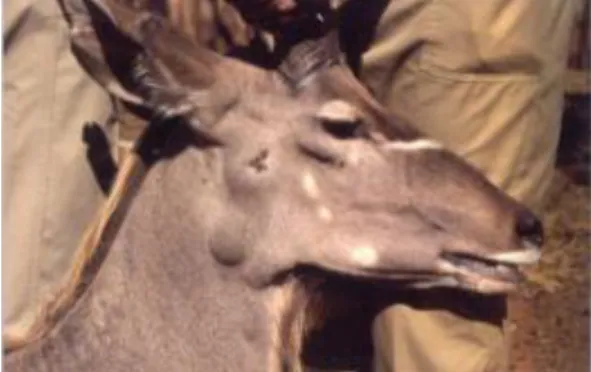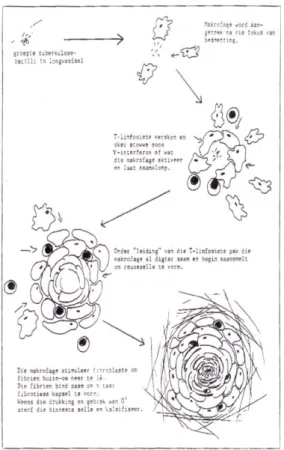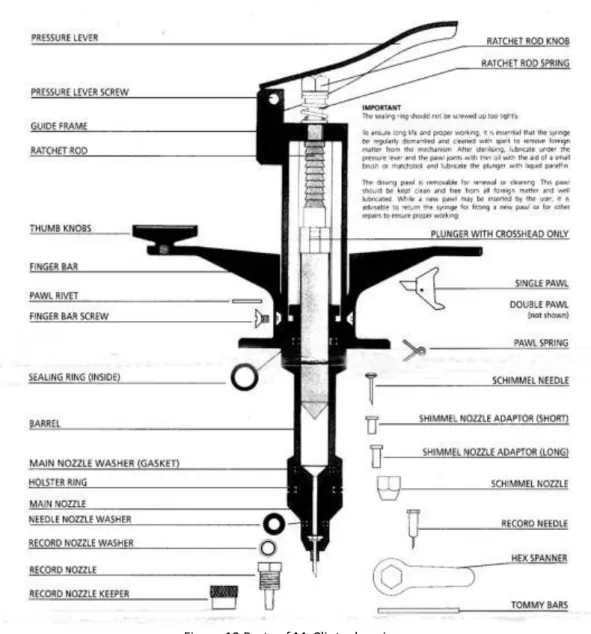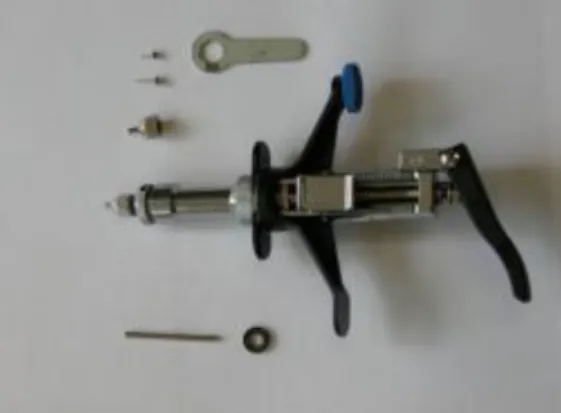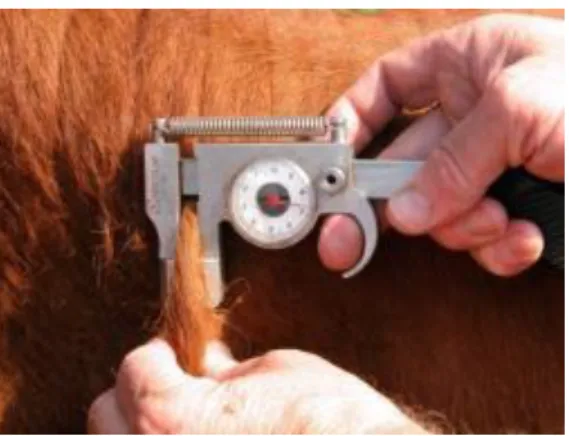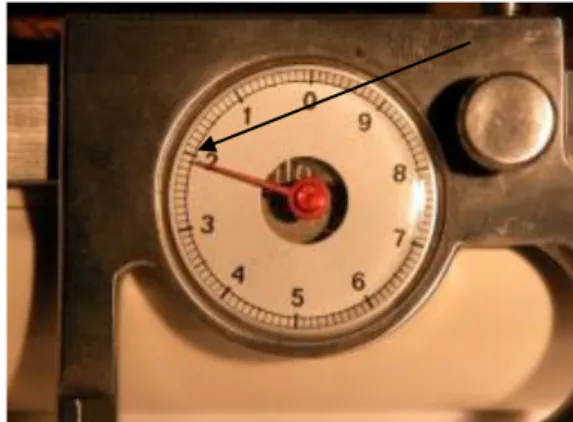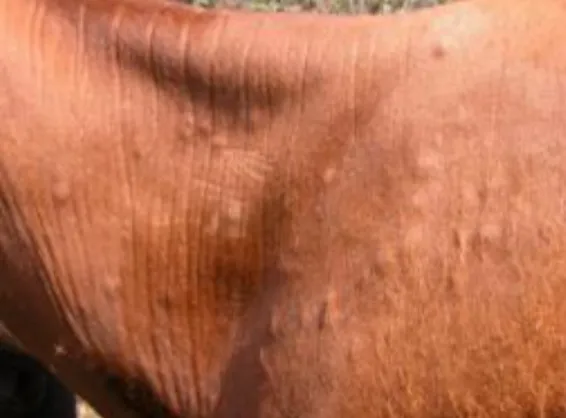In cases of infection of the udder, it is sometimes found that only one quarter, especially a hind quarter, near the attachment of the udder, is involved. Pigs can be tested for tuberculosis using the intradermal test performed in the soft skin at the base of the ear.
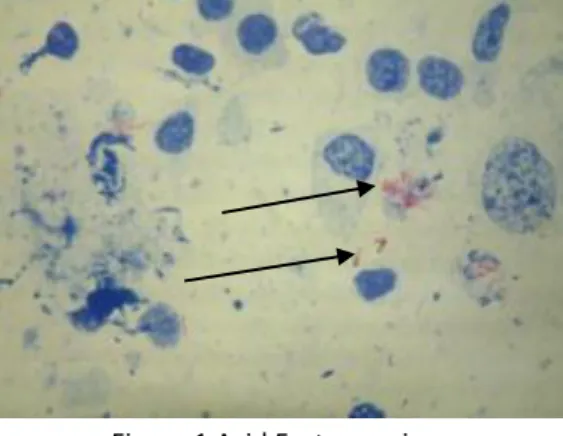
2 BASIC IMMUNOLOGY
- TYPES OF IMMUNITY
- THE ORGANS OF THE IMMUNE SYSTEM
- THE CELLS AND MOLECULES OF THE IMMUNE SYSTEM
- Lymphocytes (Cells)
- Lymphocytes (Cells)
- THE IMMUNE RESPONSE
They are often called scavengers because they pick up and ingest foreign materials (antigens) and present these antigens to other cells of the immune system. This is one of the important first steps in triggering an immune response.
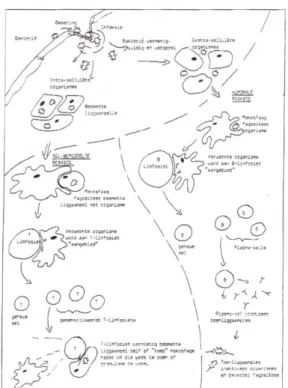
3 THE INTRADERMAL TEST FOR BOVINE TUBERCULOSIS
INTRODUCTION
TESTING EQUIPMENT
Before the injection of tuberculin, the area on the side of the neck should be trimmed free of hair. Farmers should be advised before the test not to submerge their animals on the day of the test, as wet animals should not be tested.
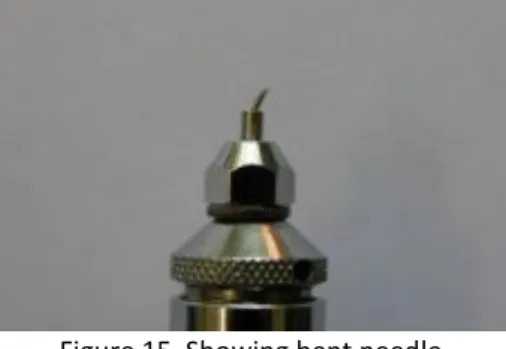
OTHER EQUIPMENT
The umbrella provides shade for the equipment and cooling area, thus ensuring that the correct temperature is maintained. The cooler box should be large enough for the amount of tuberculin required for testing and with enough ice packs to ensure that a temperature of 4-8°C is maintained at all times.
ANIMAL HANDLING EQUIPMENT
A cool box is an essential part of the test equipment, and the tuberculin must be stored between 4 and 8 °C in the dark during the test. NOTE: Tuberculin bottles should be surrounded by ice packs but not in direct contact with them to prevent freezing. Performing a TB test can be dangerous and officers should always carry a basic first aid kit to properly treat minor injuries.
It is always a good idea to have a thin screwdriver to help attach McClintock syringes, also useful for filling McClintock from 18-dose vials.
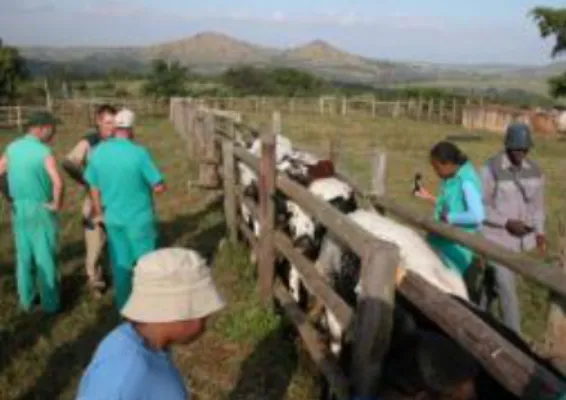
IMMUNOLOGY OF TUBERCULOSIS
- TYPES OF IMMUNITY a.) CELLULAR IMMUNITY
TUBERCULIN
The temperature in the office refrigerator should be checked regularly (weekly) with a laboratory thermometer. When transporting tuberculin it should always be kept in a cool box surrounded by sufficient ice packs to ensure that a temperature of +/- 40C is maintained. This cool box should be in the shade in the coolest place near the crush pen.
Before filling a syringe, examine the tuberculin, check the expiration date, and make sure that the liquid is clear without any sediment and that the correct tuberculin has been filled into the correct syringe. At the end of a test, any remaining tuberculin in McClintock syringes should be discarded and the contents of the vial should also be used on the day the vial is opened and not later.
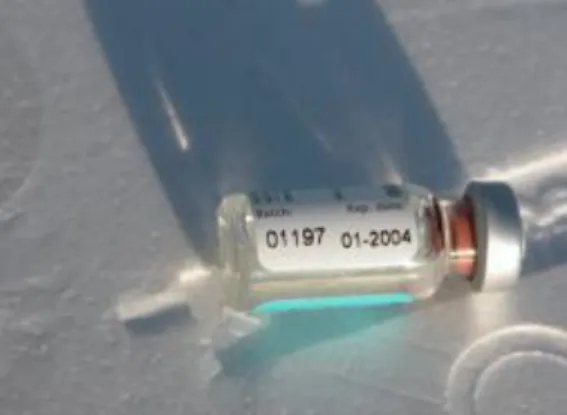
TESTING PROCEDURE
The needle is then inserted into the bottle and the air is expelled into the bottle. The syringe and bottle should be held upright and the plunger slowly pulled out, drawing the tuberculin into the syringe. The syringe and bottle should be held upright and the plunger slowly pulled out, drawing the tuberculin into the syringe.
When all the tuberculin is in the syringe, then a dose is injected back into the bottle. If there is air in the syringe, then the air can be seen as it is injected into the bottle. If there is air, then additional doses should be injected into the vial until there is no air in the syringe at all.
If air remains in the syringe, a full dose will not be injected into the animal and the test may show false negative results. If the injection is too low, the tuberculin will be injected into the hard horny tissue of the epidermis.
READING OF RESULTS
The reaction to the tuberculin will also be poor in this skin layer due to the poor blood supply. When reading a test, it is essential that any animal injected is present on the day of the reading. Necrosis, or cell death, can be seen as a round, dark area in the center of the reaction.
Necrosis is caused by swelling of the tissue and interruption of blood flow to the central areas of the reaction. In infected animals, the lymph nodes in the area next to the reaction may be enlarged and painful. We can compare the animal's reaction and determine whether the swelling is painful or not.
The normal skinfold is measured just above the reaction or on the other side of the neck opposite the thickened skinfold. No measurement is taken and no description of the reaction site is entered on the TB10 form where there are no palpable reactions at the injection site after 72 hours.
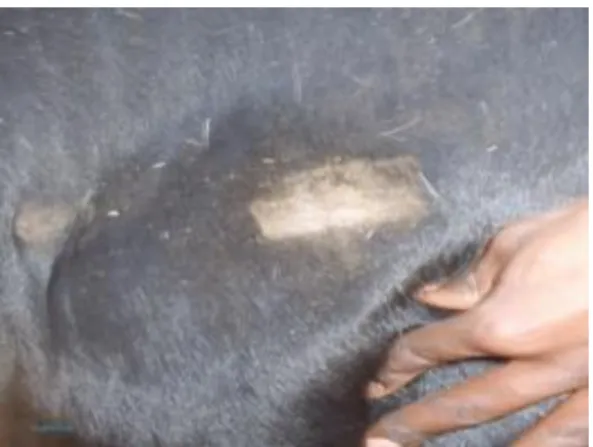
INTERPRETATION OF TEST RESULTS
The table below shows the interpretation of the comparative test in negative or suspected negative herds. The purpose of the comparative tuberculin test is also to differentiate animals that show some reaction to the tuberculin test but are not infected with M. In the Western Cape, Eastern Cape and Kwazulu Natal, skin lesions can complicate the interpretation of the tuberculin test.
The State Veterinarian is responsible for testing the infected herd and tracking all movements. After a positive meat inspection, herd testing is mandatory. ii) Contamination in milk. In some cattle, M. bovis infection may be self-limiting, resulting in encapsulation of microgranulomatous lesions.
These animals react poorly and the reaction often fluctuates in relation to the tuberculin test. These animals are not a great danger to the rest of the herd as long as the tuberculosis remains inactive.
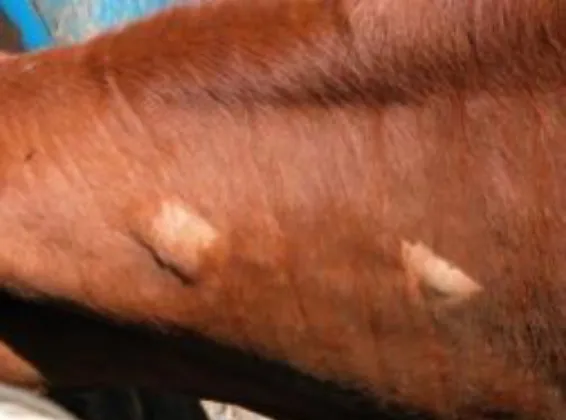
4 The Gamma Interferon Assay (IFNg) 4.1 Principle
Procedure
Use of the IFNg test
5 ZOONOTIC ASPECTS
TB is the most common opportunistic infection and leading cause of death in people living with HIV/AIDS. Early treatment can heal lung lesions, but not in other parts of the body. Organs infected by disseminated pulmonary TB. Cough is the most common symptom, early in the course of the disease it may not be productive, but once necrosis begins, sputum is usually produced.
False negative tests can occur in children with severe malnutrition, after measles, HIV o Chest X-rays are difficult to interpret.
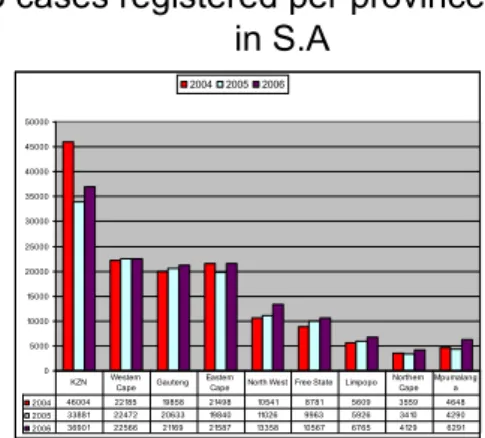
6 TEST PROGRAMMES
- Accreditation (01)
- Maintenance (Annual diagnostic) herd tests (02)
- Diagnostic Herd Tests (03)
- Diagnostic (04)
- Imports (05)
- Exports (06)
- Infected herd program
If the tests are carried out before or after the annual or biannual test for the renewal of the tuberculosis-free certificate, this test must be reported separately on TB 10. The cattle that must be subjected to a second test in such a case must be kept in quarantine and must not mix with the rest of the herd until the second test has been carried out with negative results. In both cases, it is required that the purchased cattle must be thoroughly isolated from the herd in accordance with the terms of the agreement (TB 1).
Positive reactors found during the test obviously lead to the herd being treated in accordance with the requirements of the "Contaminated Program" (see 6.7). The technician may still carry out the tests, but the State Veterinarian must be present on the day of reading and must be responsible for diagnosing the readings. These reactors must be removed from the herd immediately (same day if possible).
The state veterinarian will organize the slaughter of infected animals and the farmer will be responsible for transporting the animals to the slaughterhouse. Infection or suspected infection must be reported to the local State Veterinarian in terms of the Animal Diseases Act, 1984 (Act No. 35 of 1984).
7 ADMINISTRATION OF THE SCHEME
The ordering & issuing of tuberculin
Forms in use (available from local State Veterinarian)
Here a compiled summary for the entire district is drawn up and submitted to the Director: Animal Health of the province. The form is then sent to the State Veterinarian at the place of origin of the animal/s with copies to the relevant Deputy Director: Animal Health (and the TB and Brucellosis coordinator where applicable). After the Deputy Director: Animal Health (TB and Brucellosis coordinator) receives a copy of the TB report, it must be kept for one month.
The first two parts of the form are completed in full as described above under 7.2.6. The third part of the form related to these tests is completed as follows. The first two parts of the form are completed in full as described above under 7.2.7.
The third part of the form is completed as described in 7.2.7.1, but only in respect of all animals showing visible/tangible reactions. The form enables the state vet to remind the private vet of their client's herd tests that need to be done.
8 TUBERCULOSIS – LEGISLATION
5 Mode of infection (1) Secretion and excretion of Mycobacterium bovis. 2) Infection through inhalation, licking, grazing or consumption of feed, water or milk. 6 Characteristics of infection (1) Mostly no symptoms (2) Advanced stage symptoms (3) Postmortem exhibition of tubercles 7 Tests for bovine tuberculosis (1) Tuberculin test. 6) “T” mark on the left side of the neck, separation, prohibition of retesting and authorization of retesting of infected cattle.
11 Cancellation of isolation (1) Conditions for cancellation of the order on the isolation of infected cattle herds (2) Conditions for cancellation of the order on the isolation of suspicious cattle 12 Disinfection of certain premises. Method, frequency and means for disinfecting facilities on land with an infected herd of cattle (as in regulation 15). 13 Removal of infected cattle (1) Slaughter of infected cattle in a slaughterhouse or on land (2) For the account of the responsible person.
16 Acceptance into the scheme (1) The role of the person responsible for participating in programs of accredited herd, annual diagnostic (maintenance) herd, diagnostic herd or diagnostic testing. 3) Disinfectants and medicines at the expense of the responsible person (4) INH supplied free of charge, tuberculin supplied free of charge for infected or suspected cattle herd.
9 Animal Disease reporting codes
AANSOEK OM TOELATING TOT DIE SKEMA VIR DIE UITREISING VAN BEVIERTUBERKULOSE/BEESBRUCELLOS Geakkrediteerde kuddeprogramme / Geakkrediteerde kuddeprogram Onderhoudskuddeprogramme / Diagnostiese kuddeprogramme / Diagnostiese kuddeprogram Diagnostiese toetsprogramme / Diagnostiese toetsprogram. Ek, die ondergetekende, onderneem om te voldoen aan die bepalings van die Wet op Dieresiektes, 1984 (Wet 35 van 1984) met betrekking tot die uitwissing van beestuberkulose/beesbrucellose.
In the local municipality of: Albert Luthuli Subject was subjected to the prescribed test for Was subjected to the prescribed tests for. enter comments here – ie first negative test on positive herd or whatever.).
